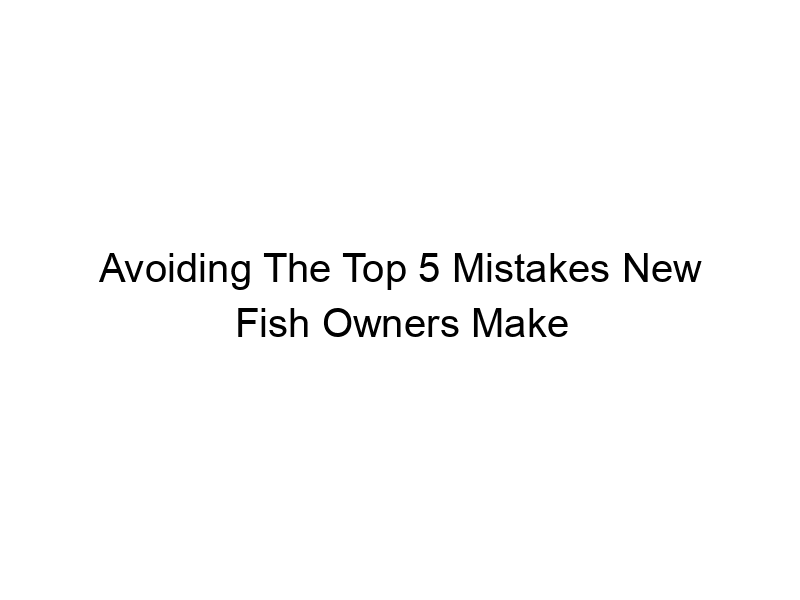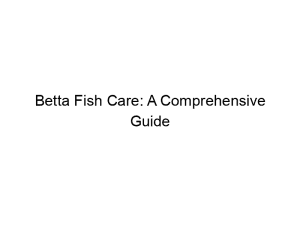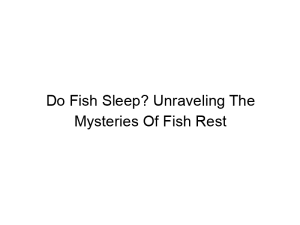Bringing home a new pet fish is exciting! But the underwater world is more complex than it seems. Many new fish owners unintentionally make mistakes that can lead to unhappy, unhealthy, or even dead fish. This article will cover the Top 5 Mistakes New Fish Owners Make, helping you avoid common pitfalls and ensure your aquatic companions thrive. We’ll cover everything from tank setup and water parameters to feeding and choosing the right fish. Get ready to learn how to become a successful fish keeper!
The nitrogen cycle is the cornerstone of a healthy aquarium. It’s the natural process by which harmful ammonia, produced by fish waste and decaying organic matter, is converted into less toxic nitrites, and finally into nitrates, which are relatively harmless in moderate
amounts. This conversion is achieved by beneficial bacteria that colonize your aquarium’s filter media and substrate.
Without an established nitrogen cycle, ammonia levels will skyrocket, causing severe burns and ultimately death to your fish. Think of it like this: your fish are producing waste, and without the bacteria to clean it up, they’re essentially poisoning themselves.
Establishing the Nitrogen Cycle
Establishing the nitrogen cycle takes time, typically 4-6 weeks. You can speed it up slightly by adding a “cycle booster” product available from most pet stores. These often contain beneficial bacteria that jump-start the process. The best way, however, is a slow and steady approach to avoid shocking your system.
- Set up your tank with appropriate filter media and substrate.
- Add dechlorinated water.
- Introduce a source of ammonia, like fish food or pure ammonia solution (carefully measured!).
- Monitor ammonia, nitrite, and nitrate levels daily using a test kit.
- Once ammonia and nitrites consistently convert to nitrates, your cycle is established and you can add your fish.
Testing Your Water Regularly
Regular water testing is paramount. Invest in a reliable liquid test kit, as they’re generally more accurate than test strips. Keep track of your readings to identify and address any imbalances promptly. Many aquarium keepers use detailed log books or apps to track water parameters, feeding schedules, and any significant events in their aquarium.
Mistake #2: Choosing the Wrong Tank Size
Overstocking: A Common Issue
Many beginners underestimate the space required by their fish. Overstocking leads to increased waste production, exceeding the tank’s filtration capacity, and creating stressful living conditions for the fish. This accelerates the buildup of harmful substances and increases the risk of disease outbreaks.
Choosing the Right Tank Size
Research the specific requirements of the fish species you intend to keep. Look for information on their adult size, temperament, and activity level. A larger tank is always better, allowing for more space, better water quality, and a more stable environment. Consider the long-term growth of your fish and select a tank large enough to accommodate their adult size.
Fish Compatibility
Not all fish get along! Some species are aggressive or territorial, while others are peaceful and require compatible tank mates. Learn about each fish’s social needs before combining them in a single tank to prevent aggression, stress, and even death.
Mistake #3: Neglecting Water Quality
Water Parameters: pH, Temperature, Ammonia, Nitrites, Nitrates
Maintaining stable water parameters is critical. These include the pH level (acidity or alkalinity), temperature, and levels of ammonia, nitrites, and nitrates. Fluctuations in these parameters can stress your fish, making them susceptible to diseases. Consistent testing is key.
Partial Water Changes: A Routine Task
Regular partial water changes (10-25% weekly) are essential for removing accumulated waste and maintaining water quality. This helps control nitrate levels and keeps the water fresh and clean. Always use dechlorinated water to avoid harming your fish.
Maintaining a Clean Tank
Regular cleaning, removing uneaten food and excess algae, prevents the build-up of organic matter and reduces harmful bacteria. Avoid over-cleaning, which can disrupt the beneficial bacteria in your filter. You should always remove any uneaten food daily.
Mistake #4: Poor Diet and Overfeeding
Providing a Balanced Diet
Fish require a balanced diet to thrive. This usually means a variety of high-quality flakes, pellets, and possibly live or frozen foods (like bloodworms or daphnia), depending on the species. Read the food labels carefully, and never overfeed your fish.
Overfeeding: A Common Issue
Overfeeding is one of the most common mistakes new fish owners make. It leads to uneaten food decaying in the tank, increasing ammonia levels, and creating unhealthy conditions. Always observe how much your fish consume in a few minutes and only feed that amount.
Dietary Diversity
Just like humans, fish need variety in their diet. A monotonous diet lacks essential nutrients and can lead to deficiencies. Providing a varied diet, tailored to your specific fish species, improves their health and longevity.
Mistake #5: Improper Quarantine Procedures
Quarantine: A Protective Measure
Before introducing new fish to your established tank, always quarantine them in a separate tank for at least 2-4 weeks. This allows you to observe them for signs of disease or parasites that could infect your main tank population. Even if your new fish appears healthy, it’s a crucial preventative measure. New fish can carry diseases or parasites that are not immediately visible.
Quarantine Tank Setup
Your quarantine tank doesn’t need to be fancy, but it should have a filter, heater, and sufficient water volume for the size of the fish. Maintain good water quality in your quarantine tank during this observation period.
Observing for Disease
Monitor your quarantined fish closely for any signs of illness, such as unusual behavior, lethargy, loss of appetite, fin rot, or lesions on the body. If you notice anything unusual, seek veterinary advice.
Choosing the Right Fish for Your Experience Level
Beginner-Friendly Fish Species
Start with hardy and adaptable species like mollies, platies, or guppies if you’re a beginner. These fish are known for their resilience and ability to tolerate minor fluctuations in water parameters.
Advanced Fish Species
More challenging species, such as discus fish or angelfish, require advanced aquascaping, precise water parameter control and careful diet management. Only attempt to keep these fish when you have substantial experience.
Matching Fish to Your Tank’s Capabilities
Consider your tank’s size, filtration, heating, and overall setup when choosing fish. Don’t overcrowd your tank, and ensure you have the correct equipment to maintain the required water conditions.
Understanding Aquarium Equipment
Filtration: Maintaining Water Quality
An appropriate filter is essential to remove waste and maintain clean water. Choose a filter that’s appropriately sized for your tank. It is important that your filter is properly rated for your water volume. Regular cleaning, without damaging the beneficial bacteria colony, is vital for optimum operation.
Heating: Maintaining Optimal Temperature
Most tropical fish require a heater to maintain a consistent temperature. The required temperature varies by species, so research is essential. You should use a reliable thermometer to track the water temperature, and adjust the heater accordingly.
Lighting: Providing the Right Spectrum
Aquarium lighting is crucial for photosynthesis by live plants. It also influences the health and behavior of fish. Choose appropriate lighting for your tank setup and consider the light needs of any plants or corals you intend to keep.
Aquarium Maintenance and Cleaning
Regular Water Changes
Partial water changes are essential. Aim for 10-25% weekly to remove waste and maintain water quality. Using a gravel vacuum helps remove debris and keeps the substrate clean.
Cleaning the Filter Media
Clean or replace filter media regularly, as per manufacturer’s instructions. Avoid excessive cleaning which can disrupt the bacterial colony.
Algae Control
Algae is common in aquariums. Regular maintenance, appropriate lighting, and balanced nutrients will usually control algae growth. Avoid the use of harmful chemicals that could harm your fish.
Decorating Your Aquarium
Choosing Suitable Decorations
Select aquarium decorations that are safe for your fish, avoiding anything sharp or that could leach harmful chemicals into the water.
Creating a Natural Environment
Mimicking the fish’s natural habitat creates a more enriching and stimulating environment. Use suitable substrate, plants, rocks, and hiding places that suit your fish’s needs. Research the natural habitat of each fish species.
Avoid Overcrowding
Leave ample space for your fish to swim and explore. Avoid cluttering the tank excessively.
Common Aquarium Diseases and Treatments
Ich (White Spot Disease)
Ich is a common parasitic infection. Symptoms include small white spots on the fish’s body. Treatment usually involves raising the water temperature and adding medication.
Fin Rot
Fin rot is a bacterial infection that causes the fins to fray and deteriorate. Treatment includes improving water quality and administering antibiotics.
Treating Diseases
Proper diagnosis is essential. Consult a veterinarian or experienced aquarist if you suspect your fish is ill. Avoid self-treating without proper identification of the disease.
Troubleshooting Common Aquarium Problems
Cloudy Water
Cloudy water can be caused by several things, including bacterial blooms, overfeeding, or insufficient filtration. Address the underlying cause.
Fish Not Eating
If your fish is not eating, it could be a sign of illness, stress, or poor water quality. Examine the possible issues and take corrective measures.
Aggressive Fish
If fish are fighting, they may need to be separated or rehoused. Ensure compatibility and sufficient space for each fish.
Frequently Asked Questions
What is the most important aspect of fishkeeping?
Maintaining water quality is the most critical aspect of successful fishkeeping. It directly impacts the health and well-being of your fish.
How often should I clean my aquarium?
Regular partial water changes (10-25% weekly) and cleaning of the filter media are essential. Avoid over-cleaning, which can disrupt beneficial bacteria.
What are the signs of a sick fish?
Signs include lethargy, loss of appetite, unusual behavior, discoloration, fin rot, and lesions. Immediate attention is required.
Can I use tap water for my aquarium?
No, tap water usually contains chlorine and chloramine, which are harmful to fish. Always use dechlorinated water.
What type of filter is best for my aquarium?
The best filter depends on the size of your tank and the type of fish you keep. Consider the flow rate and filtration media.
How much should I feed my fish?
Feed only what they can consume in a few minutes. Overfeeding leads to water quality issues.
How do I know if my nitrogen cycle is established?
Consistent readings of zero ammonia and nitrite, with moderate nitrate levels, indicate an established nitrogen cycle.
Final Thoughts
Successfully keeping fish requires commitment, attention to detail, and a willingness to learn. While the initial setup might seem daunting, avoiding the top five mistakes discussed here will significantly improve your chances of creating a thriving aquatic ecosystem. Remember that regular maintenance, consistent water testing, appropriate fish selection, and a balanced diet are key ingredients for a happy and healthy aquarium. Don’t hesitate to research your specific fish species’ needs thoroughly, and embrace the learning process. Happy fishkeeping!




